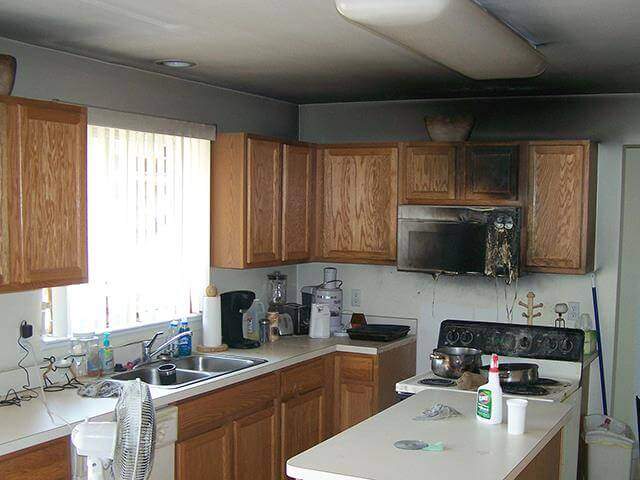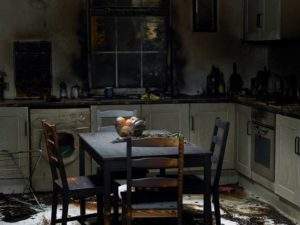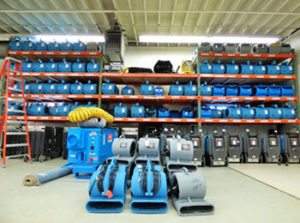Water Damage After a Fire

The aftermath of a fire can be devastating. Even if you were lucky enough not to lose your home completely in the fire, the cleanup process is extensive. Cleanup must be thorough in order to avoid lingering toxins from soot and smoke damage, and to ensure your home is safe to inhabit.
With all of these factors at work, it is easy to forget another major aspect of the fire cleanup process — water. Fire and water damage restoration go hand in hand. Whether high-pressure fire hoses were necessary to extinguish the blaze, or you were fortunate enough to only need your less destructive home sprinkler system, your home doubtlessly has extensive water damage as a result of the fire.
What Does Water Damage From a Fire Impact?

Drywall
Drywall is an area where fire and water damage clean up may not be sufficient, as if the damage is too bad, it must be cut out and replaced. Drywall soaks up water and can be a breeding ground for mold, so you should have your fire and water damage restoration professionals determine what parts, if any, of your drywall can be dried and salvaged, and what needs to be removed and replaced.
Flooring
From wood floors to carpet, water causes extensive damage to floors if not treated swiftly. The more quickly you are able to address the problem, the better, as wood floors soak up water quickly and can warp. Most likely, your carpets and rugs will have too much damage from the combination of soot, smoke, and water, and will need to be removed and replaced.
Floorboards should also be inspected for water damage and replaced where necessary.
Ceilings
Ceilings are an area of particular concern when it comes to water damage from a fire because of possible impacts on the structural integrity of your home. If you see any sagging or large bubbles starting to form in your ceiling, there may be water trapped above, which could cause your ceiling to cave in. Signs that you would normally look for in ceiling water damage, such as water spots, will be harder to notice because of the fire damage. It is especially important for your fire and water damage recovery team to carefully inspect your ceilings to ensure they are dry and structurally sound.
Permeable Belongings
The list could go on and on when it comes to your possessions that may have been damaged by water. Many of them will be the same that will have soot and smoke damage. The more permeable a material, the more damage is possible. For instance, a wooden table will absorb more than a metal table ever could. The same goes for fabrics and books.
The Hidden Danger of Water

Mold can begin to grow in as little as 24 hours. Considering all of the chaos that ensues directly after a fire, it is possible that your home will not have fully been treated for its water damage by that point. It is imperative that you use a fire and water damage remediation specialist who also specializes in mold remediation, as they will be able to detect any mold that has already begun to grow and also disinfect and ensure that no further growth occurs.
The Cleanup Process

The good news is that you don’t need to handle the damage from the fire and water separately. While both fire and water damage cleanup are extensive processes, a company that specializes in both can treat them simultaneously. As you might imagine, there will be few, if any, areas of your home that are damaged only by water and not also by fire, smoke, or soot. As a result, your fire and water damage cleanup crew will thoroughly manage both fire and water damage as they encounter it, being careful to follow established procedures to ensure both conditions are taken care of.
If you have experienced a fire and need help dealing with the aftermath, Abbotts Fire and Flood is here to help. Contact us 24 hours a day to get the ball rolling and begin bringing your home back to its pre-loss condition. We work directly with insurance companies and can act as a middleman, ensuring you get the most coverage possible. Get in touch now for a free consultation.

